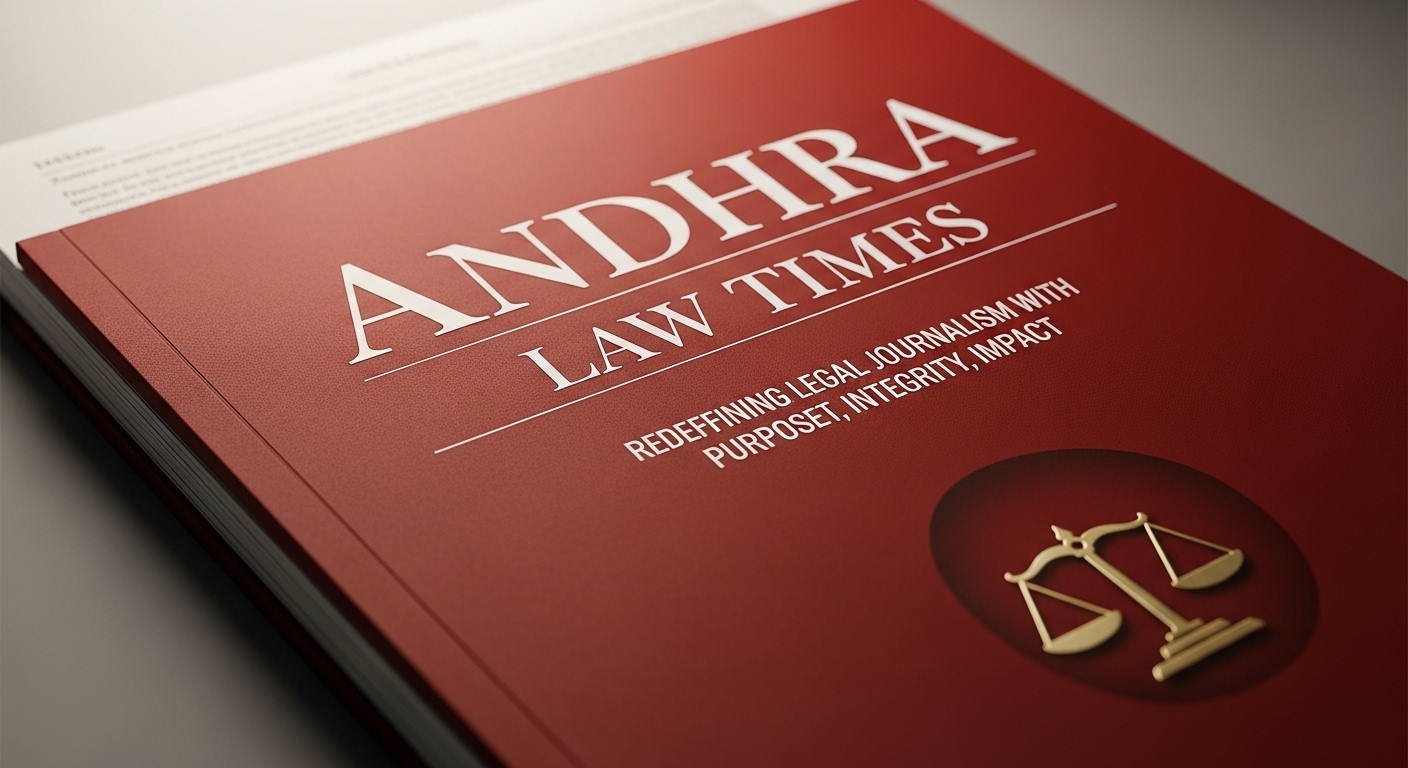LAW
Class Action Lawsuits vs. Mass Torts: What’s the Difference?

When multiple people suffer similar harm due to a defective product, medication, or catastrophic event, they often turn to collective legal actions for justice. While mass tort litigation and class action lawsuits provide ways for groups of individuals to seek compensation, they differ in crucial aspects that can impact how cases are handled and damages are awarded.
Knowing the differences between these two legal paths can help potential claimants choose the right approach for their circumstances. This guide will explore the distinctions between class action lawsuits and mass torts, shedding light on what makes each unique and how they serve those seeking justice.
What Is a Class Action Lawsuit?
A class action lawsuit is a legal process where one or more plaintiffs, known as class representatives, file a claim on behalf of a larger group or class of people who have suffered similar harm. The goal is to combine many more minor claims into a single, more robust case. Doing so makes the legal process more efficient, reducing the time and resources needed to handle individual claims.
In a class action, the outcome—a settlement or a court ruling—applies to all class members. If the class wins, the settlement is divided equally among the participants. However, it also means that all class members must accept the outcome, even if they believe they might have received more compensation through an individual lawsuit.
This structure makes class actions suitable for cases where the damages for each individual might be relatively small, but the collective impact is significant.
What Is a Mass Tort?
A mass tort is a legal process that allows multiple plaintiffs to file individual claims that are handled together. Unlike class actions, mass torts treat each case as separate entities, focusing on each
claim’s specific details and damages. This approach enables more personalized compensation, as each plaintiff’s settlement or judgment is based on their unique circumstances.
Mass torts often involve situations where the harm caused varies widely among individuals, such as serious side effects from medication or varying levels of injury from a defective product. The plaintiffs share certain aspects of the legal process, such as evidence collection and expert testimony. Still, their individual experiences and damages are crucial in determining the compensation they receive.
Critical Differences Between Class Actions and Mass Torts
- Structure of Claims: In class actions, the group is treated as a single entity, with one outcome applied to everyone. Mass torts, on the other hand, allow each plaintiff’s claim to be treated individually, which can result in different outcomes for each participant.
- Compensation: Class actions often result in settlements divided equally among class members, meaning smaller amounts for each individual. In mass torts, settlements or verdicts are based on each plaintiff’s specific injuries and losses, which can result in more tailored compensation.
- Case Management: Class action cases are certified by a judge before proceeding, which means the court must agree that the claims are similar enough to be handled as a class. Mass torts do not require this certification process. Instead, they involve consolidating similar cases for efficiency while considering individual differences.
- Legal Representation: In a class action, class members are usually represented by a single legal team, which means that individual participants have little control over the direction of the case. In a mass tort, each plaintiff retains their legal representation, giving them more control over their claim while benefiting from shared resources and information.
When to Consider a Class Action
Class actions are often the best choice when many people have experienced similar harm, such as being overcharged by a company or misled by false advertising. They are ideal for cases where the damages for each person are relatively small, making it impractical to pursue individual lawsuits.
Class actions allow individuals to join forces without investing time and resources into a personal legal battle, making it easier for many to seek justice collectively.
When to Consider a Mass Tort
Mass torts are typically more suitable for situations where the injuries or damages vary widely among those affected. This might include cases involving dangerous drugs, defective medical devices, or large-scale disasters.
If the harm caused is more severe or unique to each person, a mass tort can offer a better chance of receiving compensation thatreflects those differences. Mass torts benefit from a collective legal approach while allowing individual stories to be heard.
Which Approach Is Right for You?
Deciding between a class action and a mass tort is based on the specific circumstances of your case. Factors like the severity of your injuries, the number of people affected, and the desired level of control over the legal process all play a role in choosing the best path forward. Consulting with a lawyer with experience in these cases can help you make the right decision and pursue the best chance of a favorable outcome.
Class action lawsuits and mass torts are essential for individuals seeking justice against powerful entities.
LAW
Andhra Law Times: Redefining Legal Journalism with Purpose, Integrity, and Impact

In an era where journalism is under intense scrutiny, legal media must do more than report cases or publish verdicts. The most respected platforms are those that combine sharp analysis, ethical rigor, and a commitment to social justice. Andhra Law Times is one such rising voice—an emerging leader in legal journalism that bridges traditional reportage with meaningful impact, shaping how law is understood, discussed, and applied in Andhra Pradesh and beyond.
This article delves into what makes Andhra Law Times distinct: its editorial philosophy, its alignment of performance with social responsibility, and why it represents the future of journalistic leadership in legal reporting.
Who Is Andhra Law Times?
Andhra Law Times is a legal news and commentary platform. Though relatively new on the landscape, it has steadily gained recognition for its nuanced reporting, expert commentary, and dedication to accessibility. It covers court judgements, legislative developments, public interest litigation, and rights issues—yet what sets it apart is how those stories are told: with clarity, context, and concern for the communities affected.
More than just breaking news, Andhra Law Times positions itself as a bridge: between judges and the public, between legal theory and lived experience, between governance and accountability. Its contributors include practicing lawyers, scholars, activists, and citizen journalists, all working together to ensure law is not just a formality, but a force for justice.
A Leadership Philosophy Rooted in Purpose
At the heart of Andhra Law Times lies an editorial philosophy built on purpose-driven journalism. Its core values include:
-
Empathy in Reporting
Stories are not just events—they’re about people. Andhra Law Times emphasises the human consequences of legal decisions, highlighting victims, underrepresented voices, and the socio-cultural contexts in which law operates. -
Integrity & Transparency
Legal journalism faces risks: misinterpretation, bias, sensationalism. Andhra Law Times insists on accurate sourcing, full context, and transparency about its editorial processes. Corrections are published openly; conflicts of interest are disclosed. -
Accessibility & Inclusion
Legal language is often arcane. To bridge the gap, Andhra Law Times translates complex judgments into clear writing, provides summaries, infographics, and local language versions. It works to ensure citizens—regardless of educational background—can understand their rights, obligations, and recourse. -
Social Justice Orientation
The platform does not shy away from covering issues that matter: rights of marginalized communities, environmental law, labor rights, gender justice. It aims to hold institutions accountable and to highlight systemic issues, not just isolated legal matters.
Bridging Performance with Impact
Leadership in legal media isn’t only about moral purpose; it’s also about excellence in execution. Andhra Law Times has managed to merge the two in a way that is compelling, sustainable, and socially important.
-
Quality Reporting: Articles are fact-checked diligently; legal specialists are consulted; and deeper features are produced—on constitutional law, administrative law, or public interest litigation—going beyond mere headlines.
-
Innovative Storytelling: Andhra Law Times uses multimedia—podcasts, video explainers, interviews, and infographics—to make dense legal topics more engaging. For example, a complex Supreme Court decision is broken down via animated explainer videos so people outside the legal profession can follow.
-
Community Engagement: Not just reporting on issues, Andhra Law Times partners with NGOs, legal aid societies, and law schools to host public forums, webinars, and workshops—helping citizens know where to find legal help, how to file complaints, how the law impacts daily life.
-
Sustainability & Ethics: Advertising is clearly marked; sponsored content is separated; the platform avoids sensationalizing sensitive legal issues for clicks. It also invests in its team: ensuring fair compensation for contributors, diversity of voices, and safe working conditions for reporting.
Influence in the Digital Age
Digital platforms are reshaping how people consume legal news. Andhra Law Times has embraced these changes wisely, seeing them as opportunities to amplify impact rather than mere traffic generators.
-
Social Media Advocacy & Education: Andhra Law Times maintains active presence on platforms like Twitter, Instagram, and LinkedIn, not just to share articles, but to spark conversation—debates on legal reform, rights, policy changes. Followers are encouraged to ask questions, share stories, and participate in democracy.
-
Thought Leadership: Editorials and op-eds are published that don’t just comment on legal issues but propose solutions: reforms to outdated laws, suggestions for improving access to justice, critiques of legal system inefficiencies. By doing so, Andhra Law Times positions itself as more than observer—it becomes a catalyst for change.
-
User-Generated Content & Local Voices: Recognizing that law plays out differently in small towns and villages, Andhra Law Times solicits articles and reports from local correspondents. Awareness of local customs, languages, and conditions helps it avoid a one-size-fits-all view.
Why Andhra Law Times Matters
In today’s socio-legal climate, legal information is power. Andhra Law Times matters because:
-
It builds legal awareness, enabling people to understand their rights, redress mechanisms, and how to participate in justice systems.
-
It enhances accountability, by shining light on judicial and governmental institutions, demanding transparency and reforms where needed.
-
It supports legal empowerment of marginalized groups who historically have lacked voice, resources, or representation.
-
It reinforces rule of law: in democracies, laws matter only if known, trusted, and fairly enforced. Andhra Law Times helps ensure laws don’t remain abstract but are applied in context, with fairness.
Challenges and Opportunities Ahead
Even as Andhra Law Times gains traction, its path is far from free of obstacles. Recognizing and navigating them will define its long-term success.
-
Balancing Speed with Accuracy: In breaking headlines, there is pressure to publish quickly. But legal reporting demands precision. Errors can mislead, harm reputations, or misinform the public.
-
Monetization without Compromise: Generating revenue—through subscriptions, advertising, sponsored content—can risk diluting editorial independence. Andhra Law Times must find models that support integrity.
-
Access in Rural & Underrepresented Areas: Internet access, literacy, language barriers are still obstacles. To have true impact, coverage must reach those who are least heard.
-
Maintaining Diversity of Voices: As platforms grow, institutional pressure, groupthink, or selection bias can creep in. Ensuring diverse contributors—not just legal professionals, but activists, grassroots leaders, local correspondents—is vital.
But each challenge is also an opening:
-
Investment in fact-checking tools, legal translation, local languages.
-
Subscription tiers, membership models, grants, partnerships with foundations.
-
Offline outreach: workshops, print summaries, radio, or community gatherings.
-
Mentorship programs for new writers, especially from underrepresented backgrounds.
Looking Ahead: The Vision for Andhra Law Times
The trajectory of Andhra Law Times signals a shift in what leadership in legal journalism can look like. As it continues to evolve, it may achieve several new milestones:
-
Expanding its regional reach, possibly beyond Andhra Pradesh, into national or pan-South Indian legal coverage, while retaining its local flavor.
-
Establishing a legal education wing: training programs for law students, paralegals, or community legal educators.
-
Building a repository of legal resources: free guides, searchable databases of judgments, easy-to-use toolkits for citizens.
-
Collaborations with tech platforms: legal tech startups, AI summarization of judgments, mobile apps for citizens to lodge grievances or track cases.
-
Advocating for policy reforms: using its platform to influence legislation, access to justice reforms, or judicial procedural improvements.
A Model for Leadership in Journalistic Purpose
Andhra Law Times is more than a news platform—it’s a model of what leadership in legal journalism can become. It embodies the idea that success is not just about reach or clicks—but about trust, impact, and responsibility. In a time when law shapes everyday life—during pandemics, environmental crises, social movements—the need for legal journalism that is reliable, empathetic, and justice-oriented is greater than ever.
By combining performance with purpose, Andhra Law Times demonstrates that journalism, especially around something as crucial as law, need not choose between integrity and influence. Its journey shows that ethical leadership in media is not just inspirational—it’s essential.
LAW
Child Custody Challenges: Understanding Your Rights and Options

Navigating child custody can feel overwhelming, especially during an emotional time. Understanding your rights and options is the first step to making confident, informed decisions.
Whether facing a divorce, separation, or a change in family circumstances, knowing what to expect helps reduce stress and protect your child’s best interests. Custody challenges vary, but you don’t have to face them alone.
With the right knowledge and support, you can work toward a solution that ensures stability and care for your child. Let’s break down the key points so you can move forward with clarity.
The Impact of Domestic Violence
Domestic violence can have a serious effect on child custody decisions. Courts always prioritize the child’s safety and well-being, so any history of abuse is taken very seriously.
A parent accused of violence may face limited or supervised visitation, or in some cases, lose custody altogether. Even if the child wasn’t directly harmed, witnessing violence can impact their emotional health.
That’s why it’s important to bring all facts forward. If you or your child is in danger, seeking legal and protective help right away is key to keeping everyone safe and ensuring a fair custody arrangement.
Geographic Relocation and Custody Changes
If one parent wants to relocate, they often need permission from the other parent or the court. The court will consider how the move affects the child’s schooling, family relationships, and overall stability.
Even if the move is for a job or a better life, it must still support the child’s best interests. If parents can’t agree, a judge will decide based on the facts.
Planning and communicating openly can help avoid unnecessary conflict and stress for everyone involved.
Substance Abuse Issues
Courts are careful to protect children from unsafe or unstable environments. If there’s evidence of drug or alcohol misuse, the court may limit custody or require supervised visits.
But it’s not always permanent. A parent who seeks help and shows improvement may regain custody rights over time. The focus is always on what’s best for the child.
Support from counselors, treatment programs, and legal professionals can make a big difference in moving forward in a healthy, safe direction.
The Role of Mediation in Custody Disputes
Mediation offers a peaceful way to handle custody disagreements without going to court. A trained mediator helps parents talk through their concerns and find workable solutions together.
This process is often quicker, less expensive, and less stressful than a court battle. Mediation focuses on cooperation and puts the child’s needs first.
With guidance from trusted professionals like this Springdale car accident lawyer, parents can find fair agreements that work for both sides.
Choosing mediation can help families move forward with less conflict and more understanding, which is important when children are involved.
Protecting Your Child’s Best Interests
Protecting your child’s best interests is the heart of every custody decision. By staying informed and seeking the right support, you can make choices that lead to a brighter, more stable future.
Don’t face custody challenges alone. Reach out to trusted legal professionals who can guide you every step of the way. Your child deserves security, care, and a plan that puts them first.
Did you find this article helpful? Check out the rest of our blog now!
LAW
Legal Representation for Auto and Personal Injury Accidents

Accidents can happen at any time. Whether it’s a car crash or a slip and fall, injuries from these events can turn your life upside down. When you’re hurt due to someone else’s mistake, getting legal help is important.
A lawyer can guide you through the process, help you understand your rights, and make sure you get the compensation you deserve.
This article explains why legal representation matters and how it can help you after an auto or personal injury accident.
Why Legal Help Is Important After an Accident
After an accident, many people feel confused or overwhelmed. Medical bills may pile up, and you might not be able to work. Insurance companies might call you quickly, offering a settlement. But their offer may not cover all your losses.
Having a lawyer on your side protects your interests. A lawyer understands the laws and how insurance companies operate. They know how to deal with adjusters and can stop you from accepting an unfair offer. With legal help, you’re more likely to get full compensation for your injuries, lost income, and pain.
What a Personal Injury Lawyer Does
A personal injury lawyer handles all the legal steps so you can focus on recovery. First, they will gather facts and evidence. This includes medical records, police reports, witness statements, and photos from the accident.
Next, the lawyer builds a strong case. They may speak with medical experts to understand the full impact of your injuries. They also calculate how much money you should receive. This can include current medical costs, future treatment, missed wages, and even emotional stress.
How Auto Accident Claims Are Handled
Auto accident cases often involve dealing with several parties: the other driver, their insurance company, your insurance company, and sometimes the police. It can get complicated fast.
Your lawyer will talk with all parties on your behalf. They’ll also file any necessary paperwork and make sure you meet all deadlines. If the other driver was clearly at fault, your lawyer will collect proof to show that. If the fault is unclear, they will work to protect your side of the story.
Staten Island accident lawyers often deal with serious car accident cases and understand the unique laws in New York. They can help you deal with no-fault insurance rules and ensure you get the coverage you’re owed.
Choosing the Right Lawyer for Your Case
Not all lawyers are the same. Look for someone who has experience with injury and accident cases. They should be able to explain things in a simple way and make you feel comfortable.
Check reviews and ask about past results. A good lawyer will not promise a certain outcome, but they will fight hard for your rights. Most personal injury lawyers work on a “no win, no fee” basis, which means you pay nothing unless they win your case.
All About Auto and Personal Injury Accidents
Getting legal help after an auto or personal injury accident can make a big difference. It takes the pressure off you and helps ensure you’re treated fairly. If you’ve been hurt in an accident, don’t face the process alone.
A skilled lawyer can guide you every step of the way and help you get the justice and compensation you deserve.
Looking for more tips and ideas? We’ve got you covered. Check out some of our other posts now.
-

 HEALTH2 years ago
HEALTH2 years agoIntegrating Semaglutide into Your Weight Loss Plan: A Practical Guide
-

 HOME IMPROVEMENT2 years ago
HOME IMPROVEMENT2 years agoHow to Choose the Perfect Neutral Area Rug for Every Room
-

 LAW1 year ago
LAW1 year agoTeenage Drivers and Car Accidents in California: Risks and Parental Liability
-

 LAW1 year ago
LAW1 year agoPost-Divorce Considerations in California: Modifications and Long-Term Planning
-

 CONSTRUCTION1 year ago
CONSTRUCTION1 year agoConstruction Site Safety Regulations in New York and Your Rights as a Worker
-

 HOME1 year ago
HOME1 year agoSandra Orlow: The Teen Model Who Captivated the Internet
-

 FINANCE1 year ago
FINANCE1 year agoDigital Asset Management in Florida Estate Planning
-

 LAW1 year ago
LAW1 year agoKentucky’s School Football: Concussions, Injuries, and Legal Options
